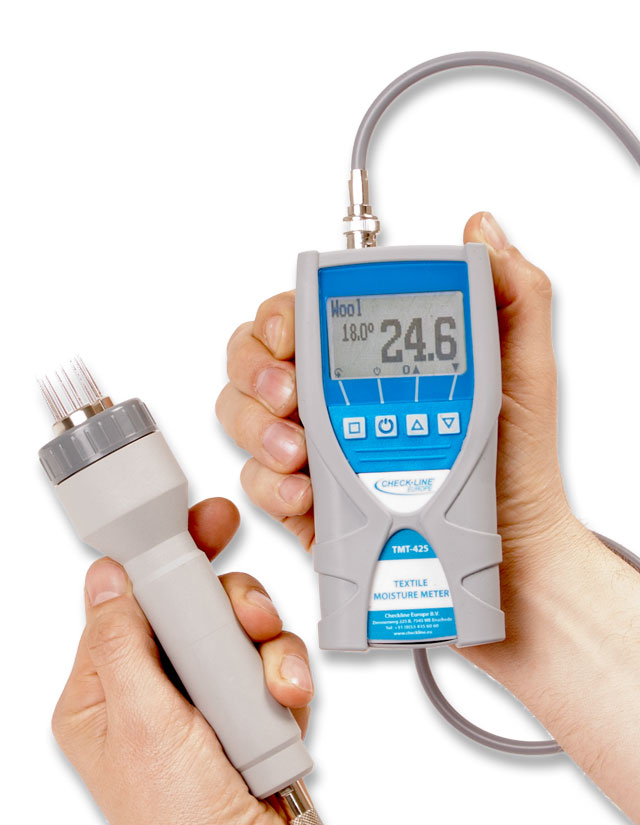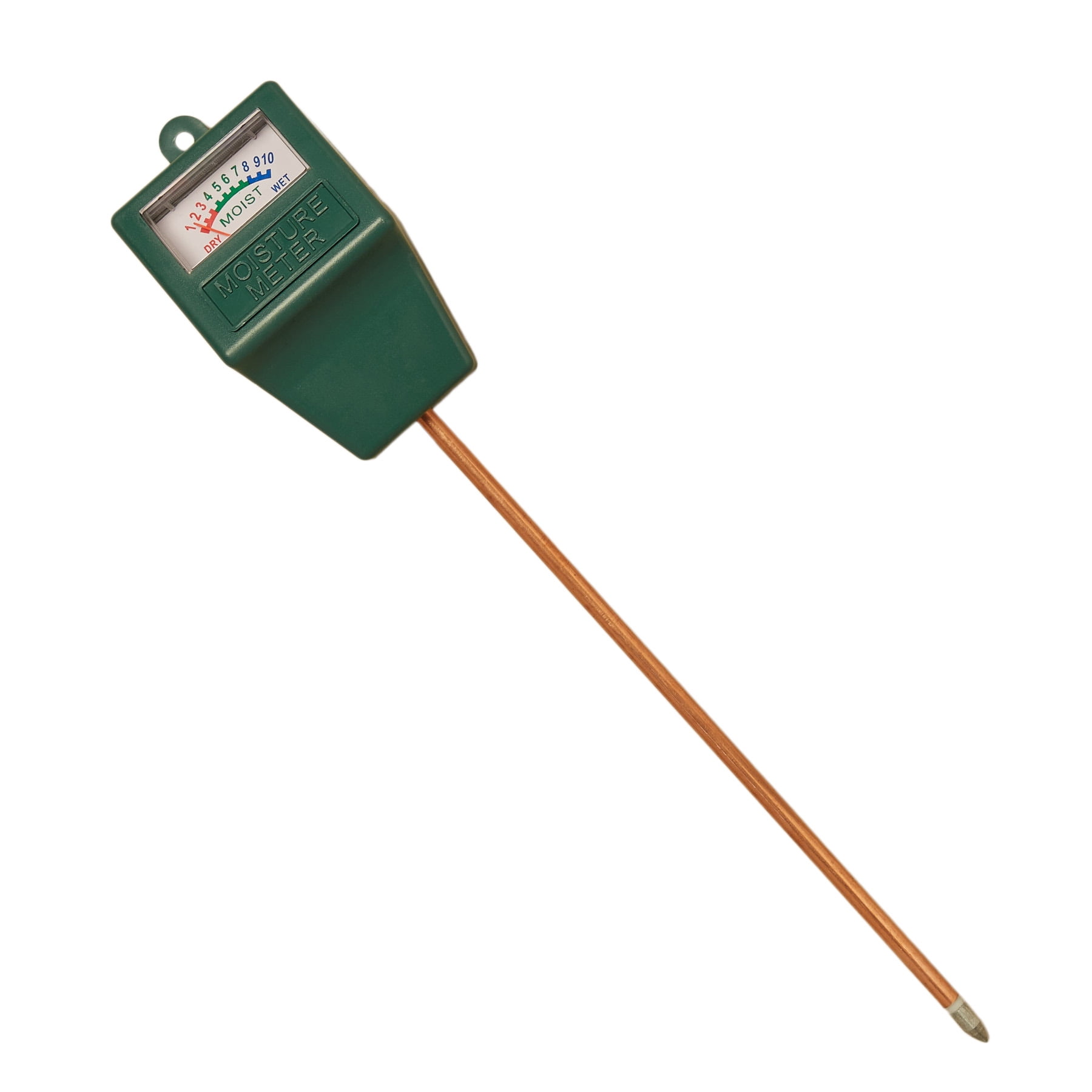Recognizing the Various Sorts Of Moisture Meters and Their Applications
Recognizing the Various Sorts Of Moisture Meters and Their Applications
Blog Article
Explore the World of Wetness Meters: Every Little Thing You Required to Know
In the world of moisture meters exists a globe of precision and practicality that usually goes undetected. Understanding just how moisture meters operate, the various types readily available, and their varied uses can lose light on their value in ensuring top quality and efficiency.
Just How Moisture Meters Job
Moisture meters run by determining the electric conductivity or capacitance of materials to establish the wetness web content present - Moisture Meter. These meters are very useful tools throughout different sectors, including building, woodworking, and agriculture. By making use of different techniques such as pinless or pin-type technology, wetness meters supply accurate readings that assist specialists make informed decisions
Pin-type dampness meters function by placing the sharp pins into the material being evaluated. On the other hand, pinless moisture meters use electromagnetic signals to scan a larger location without causing any type of damage to the material's surface.
Regardless of the approach made use of, dampness meters play an important function in stopping problems such as mold growth, architectural damages, or item flaws brought on by excess moisture. Comprehending how these meters job is crucial for making sure the top quality and honesty of products in various applications.
Types of Wetness Meters
Provided the essential function moisture meters play in numerous markets, it is vital to comprehend the various types readily available to experts for accurately analyzing dampness levels. There are mostly two major types of dampness meters: pin-type and pinless dampness meters.
Pin-type moisture meters make use of two pins that are placed right into the material being examined to determine the electric resistance between them. This technique is commonly utilized for wood, drywall, and various other structure materials. Pin-type meters give accurate analyses at specific depths, making them excellent for determining wetness gradients.
On the other hand, pinless dampness meters use electromagnetic sensing unit plates to scan a larger location of the product without causing any kind of damage. This kind appropriates for rapidly scanning huge locations and is commonly used for flooring, walls, and ceilings. Pinless meters are hassle-free for taking analyses on completed surfaces without leaving any visible marks.
Both kinds of dampness meters have their benefits and are chosen based on the particular needs of the job available. Comprehending the distinctions in between these kinds is crucial for experts to make precise dampness analyses.
Applications Throughout Industries
With diverse functionalities, wetness meters discover extensive application throughout numerous sectors, assisting specialists in ensuring ideal problems for materials and structures. In the agriculture industry, wetness meters are vital for establishing the wetness material in grains, seeds, and hay, making sure quality assurance and stopping mold and mildew growth. Building professionals rely upon moisture meters to assess the dampness degrees in structure products like concrete, drywall, and timber, which is essential for maintaining structural integrity and stopping problems like rot or mold. The flooring sector uses moisture meters to measure the dampness material in subfloors before installing different flooring, stopping costly problems due to excess wetness. In the food market, wetness meters are utilized to keep track of and manage moisture levels in products such as grains, nuts, and dried out fruits to maintain freshness and top quality. Furthermore, dampness meters play a crucial role in the reconstruction and damage a knockout post analysis market by aiding experts identify and resolve water damage in structures promptly. Across these varied industries, wetness meters are essential tools for ensuring the high quality, safety and security, and durability of numerous products and products.
Tips for Using Wetness Meters
Utilize the moisture meter's calibration setups to make sure accurate readings when gauging the wetness material in various products. Furthermore, make sure the meter is established to the right moisture array for the product you are measuring to get the most exact results.

When making use of a pin-type dampness meter, place the pins to the ideal deepness suggested for the material being tested. This ensures that the dampness analyses are taken from the correct deepness within the material, offering a more precise representation of its dampness material. For pinless wetness meters, remember to keep appropriate contact with the product's surface to obtain trusted analyses.

Routinely examine and replace the batteries in your dampness meter to stop inaccurate readings as a result of low power. When not in usage to extend its life-span and maintain its accuracy, Shop the meter in a dry and risk-free area. By complying with these suggestions, you can make the most of the efficiency of your moisture meter and learn this here now acquire precise wetness web content measurements across various products.

Maintenance and Calibration
To ensure the accuracy of dampness material measurements, routine upkeep and calibration of the wetness meter are essential action in its proper functioning. Upkeep involves maintaining the dampness meter totally free and tidy from debris that can affect its analyses. It is necessary to comply with the supplier's guidelines for cleaning up to avoid damage to the gadget. In addition, regular calibration is necessary to validate the precision of the readings. Calibration changes the wetness meter to make certain that it offers constant and reliable outcomes.
Calibration needs to be done regularly, especially if the moisture meter is made use of often or in vital applications where accurate measurements are called for. By adjusting the moisture and preserving meter frequently, users can rely on the precision of the moisture web content measurements obtained.
Verdict
To conclude, moisture meters play a critical function in various sectors by precisely measuring the wetness content of products. Comprehending just how these gadgets work, the various kinds offered, and proper upkeep and calibration are important for getting dependable outcomes. Whether in production, building, or farming, using moisture meters helps make certain quality assurance and efficiency in processes.
Construction experts count on moisture meters to examine the dampness levels in building products like timber, concrete, and drywall, which is essential for preserving architectural honesty and avoiding problems like rot or mold and mildew. The floor covering industry utilizes wetness meters to determine the dampness material in subfloors prior to mounting numerous floor coverings, avoiding expensive problems Check Out Your URL due to excess dampness.Make use of the dampness meter's calibration setups to ensure accurate readings when measuring the moisture web content in various materials. By following these suggestions, you can optimize the efficiency of your dampness meter and get specific dampness web content dimensions throughout various products.
In final thought, wetness meters play an important duty in numerous industries by precisely gauging the wetness material of materials.
Report this page